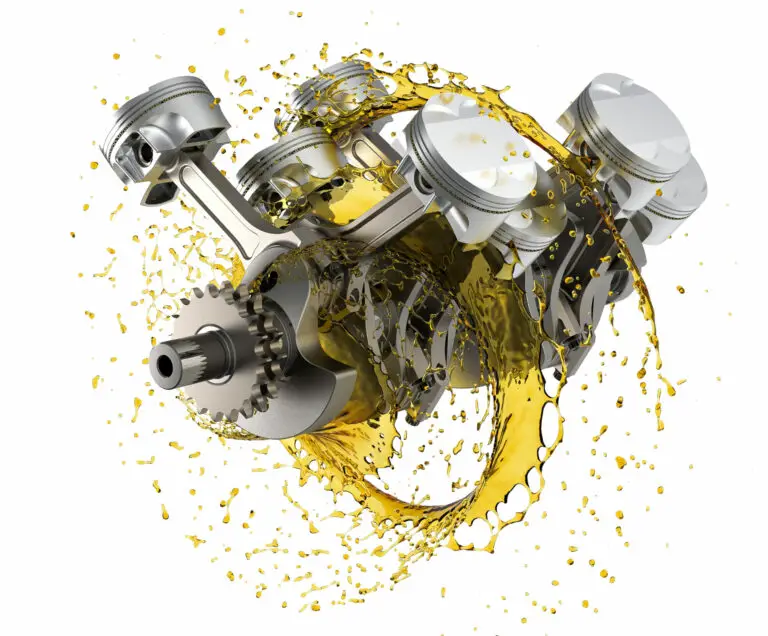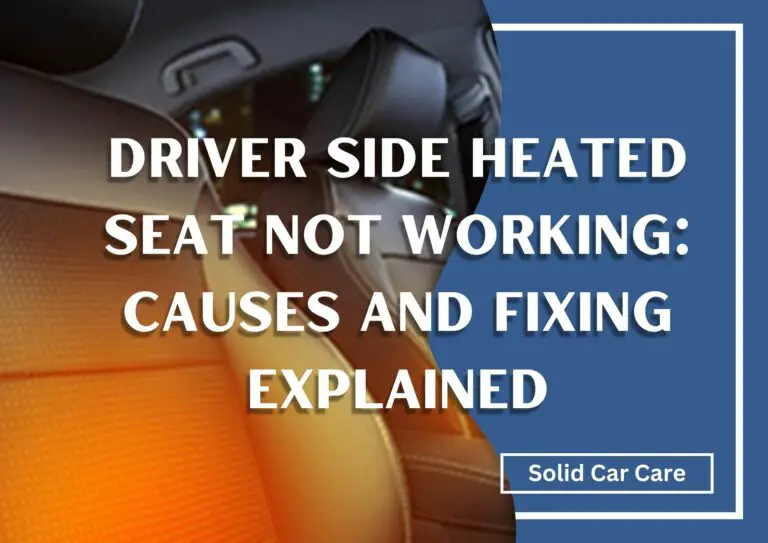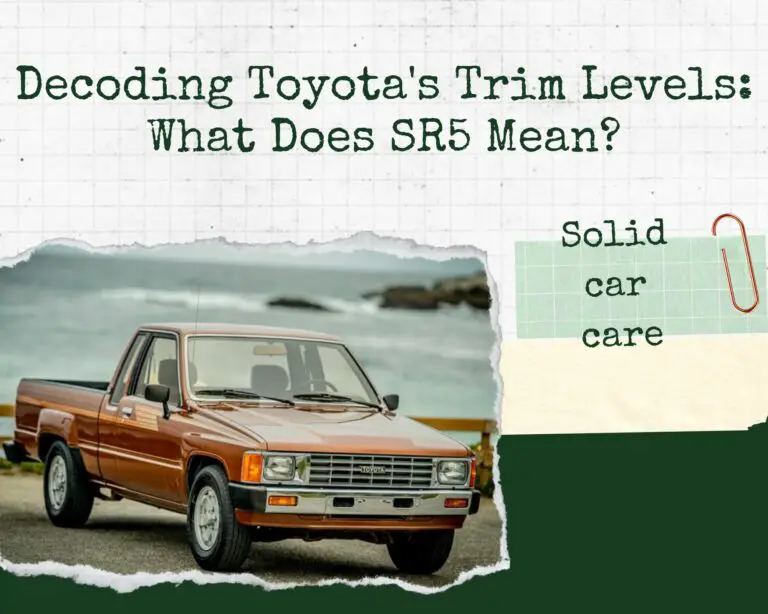Why Is There Oil All the Way Up the Dipstick?
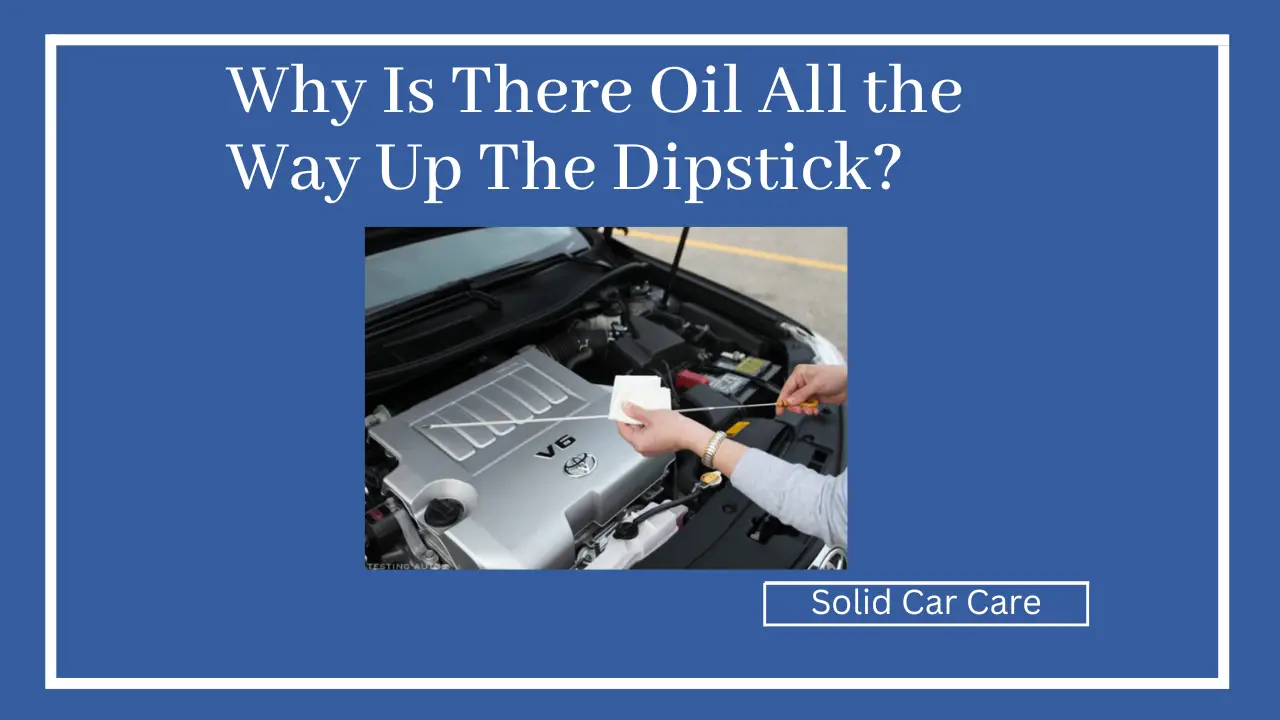
Have you ever checked your car’s oil level using the dipstick and been surprised to find oil coating the entire length of the dipstick, reaching all the way up? It’s a perplexing sight that raises questions about the health of your engine.
In this article, we’ll explore the reasons behind this phenomenon and shed light on why there can be oil all the way up the dipstick. We’ll also discuss the potential consequences of having excessive oil in the engine and provide guidance on how to rectify the situation and prevent it from occurring in the future.
Table of Contents
What is the Normal Oil Level on the Dipstick?
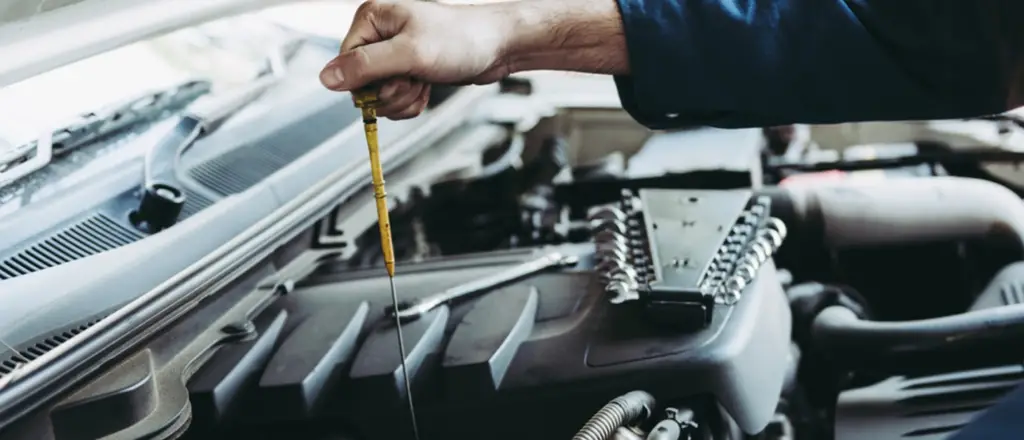
Under normal circumstances, the oil level on the dipstick should fall within a specific range indicated by markings labelled “MIN” (for minimum) and “MAX” (for maximum).
This range is carefully calibrated to ensure the engine has an adequate amount of oil for optimal performance and lubrication. Keeping the oil level within this range is crucial to avoid potential damage to the engine.
What causes Oil All the Way Up the Dipstick?
The oil may sometimes reach the top of the dipstick due to underlying engine problems.
Blow-by and Engine Ventilation Problems
Blow-by refers to the escape of combustion gases past the piston rings and into the crankcase, contaminating the oil. Engine ventilation problems, such as clogged or malfunctioning components, can worsen blow-by by increasing the pressure inside the crankcase.
This elevated pressure forces the oil upward and results in oil coating the dipstick, indicating the presence of blow-by and potential engine issues.
Worn Piston Rings and Cylinder Walls
Over time, piston rings and cylinder walls can wear out, leading to decreased compression and compromised sealing between the piston and cylinder. This wear allows combustion gases to leak into the crankcase during combustion.
The mixture of these gases with the oil causes it to rise on the dipstick, indicating worn piston rings and cylinder walls requiring attention to restore proper engine function.
Excessive Oil Fill
One common reason oil reaches the top of the dipstick is overfilling the engine with oil. If you add too much oil during an oil change or maintenance, the excess oil can reach higher levels on the dipstick.
Following the manufacturer’s guidelines and recommendations for the correct oil volume is important to prevent overfilling.
Faulty Dipstick or Dipstick Tube
In some cases, the issue may not be related to the engine itself but rather a faulty dipstick or dipstick tube.
If the dipstick is not inserted correctly or the dipstick tube is damaged or misaligned, it can give inaccurate readings, making it appear as though there is excessive oil on the dipstick.
What are the consequences of Overfilled Oil?
Having oil all the way up the dipstick due to overfilling the engine can lead to various complications. The increased oil level creates higher pressure within the crankcase, which can cause the oil to foam. Foaming oil loses its lubrication properties, leading to inadequate lubrication of critical engine components.
Excessive oil can also stress seals and gaskets, potentially resulting in leaks. Furthermore, the surplus oil can interfere with the proper functioning of the engine’s rotating assembly, causing issues with the oil pump and other components.
How to Fix an Overfilled Engine?
If you discover that your engine has been overfilled with oil and is coating the dipstick all the way up, it is crucial to rectify the situation promptly. Fortunately, fixing an overfilled engine is relatively straightforward.
The first step is to identify the oil drain plug and place a drain pan beneath it. Loosen the plug and allow the excess oil to drain into the pan until the oil level is within the recommended range on the dipstick. Once the oil level is corrected, reinsert the dipstick and ensure it displays the appropriate oil level.
Can You Add Oil to a Hot Engine? By Solid Car Care
solidcarcare.com
Why is oil not showing on the dipstick?
There can be several reasons why oil may not be showing on the dipstick:
- Insufficient Oil
The most obvious reason is that there is simply not enough oil in the engine. It could be due to a low oil level from inadequate oil changes or oil leaks. In such cases, adding the appropriate amount of oil based on the manufacturer’s recommendations is necessary.
- Incorrect Dipstick Reading
If the dipstick is improperly inserted or the oil is not allowed to settle for sufficient time before checking, it may not provide an accurate reading. Ensure the dipstick is fully inserted and follow the correct procedure for checking the oil level.
- Dipstick or Dipstick Tube Issues
A damaged or faulty dipstick or dipstick tube can also prevent an accurate reading. If the dipstick is bent, or broken, or the tube is clogged or misaligned, it may not reach the oil or provide a correct measurement. Replacing the dipstick or addressing the tube issue is necessary in such cases.
- Internal Engine Problems
In rare cases, internal engine problems such as a severe oil leak, blockage in the oil passages, or a malfunctioning oil pump can result in oil not showing on the dipstick. If you suspect internal engine issues, it is recommended to have the engine inspected by a professional mechanic.
To fix the issue:
Check the oil level: Follow the manufacturer’s recommendations if the level is low.
Verify the dipstick: Ensure the dipstick is properly inserted and undamaged.
Inspect the dipstick tube: Check for any blockages, misalignment, or damage to the dipstick tube. If necessary, clean or replace it.
Regular maintenance and careful monitoring of the oil level and dipstick readings are crucial to ensure proper engine lubrication and performance.
What is called Oil Dilution?
Oil dilution is another factor that can contribute to oil all the way up the dipstick. Oil dilution occurs when fuel or coolant mixes with the engine oil, altering its viscosity and lubricating properties. Detecting oil dilution requires careful observation of certain symptoms and signs.
What causes Oil Dilution?
Understanding the causes of oil dilution is crucial in addressing the issue. One common cause is fuel contamination, which can occur due to incomplete combustion or issues with the fuel injection system. Coolant leakage into the engine oil can also cause oil dilution, often resulting from a faulty gasket or a damaged cylinder head.
What are the consequences of Oil Dilution?
Oil dilution can have detrimental effects on engine performance and longevity. Diluted oil loses its ability to provide adequate lubrication, which can lead to increased friction and wear on engine components. It can also impair the functionality of hydraulic lifters and other critical parts, potentially reducing engine efficiency and increasing maintenance requirements.
How to prevent Oil Overfill and Dilution?
Certain precautions should be taken to prevent oil all the way up the dipstick and oil dilution. Following manufacturer guidelines regarding the correct oil volume during oil changes is essential. Regular maintenance, including promptly addressing any engine issues, can help prevent excessive oil levels and dilution.
Regular Maintenance and Oil Changes
Regular maintenance, including scheduled oil changes, is paramount in keeping your engine in optimal condition. Following the manufacturer’s recommended oil change intervals and using the appropriate oil grade can help maintain the correct oil level and avoid complications associated with oil all the way up the dipstick.
Conclusion
Oil all the way up the dipstick can be a cause for concern, but understanding the underlying causes and taking appropriate measures can help resolve the issue. Whether it’s due to overfilled oil, blow-by, or oil dilution, prompt action and regular maintenance are crucial in ensuring the longevity and performance of your engine. Maintaining the correct oil level and promptly addressing any issues, you can enjoy a smoothly running engine and peace of mind on your journeys.
Illuminating the Mystery: Understanding Why Your Oil Light Comes on When Idling
solidcarcare.com
FAQs
Can having too much oil in the engine cause damage?
Yes, having excessive oil in the engine can lead to increased pressure, foaming, and inadequate lubrication, potentially causing damage to engine components.
What should I do if I overfill my engine with oil?
If you overfill your engine with oil, it’s important to drain the excess oil promptly. Locate the oil drain plug, place a drain pan beneath it, and allow the excess oil to drain until the oil level is within the recommended range.
What causes oil dilution in the engine?
Oil dilution can occur due to fuel contamination or coolant leakage into the engine oil. Incomplete combustion or issues with the fuel injection system can lead to fuel dilution, while faulty gaskets or damaged cylinder heads can cause coolant dilution.
How can I prevent oil all the way up the dipstick?
To prevent oil up the dipstick, following the manufacturer’s guidelines for the correct oil volume during oil changes is essential. Regular maintenance, prompt addressing of engine issues, and using the appropriate oil grade can also help prevent complications.
What are the symptoms of oil dilution?
Symptoms of oil dilution include increased oil level on the dipstick, a strong odor of fuel in the oil, excessive oil consumption, reduced engine performance, and increased wear on engine components.

